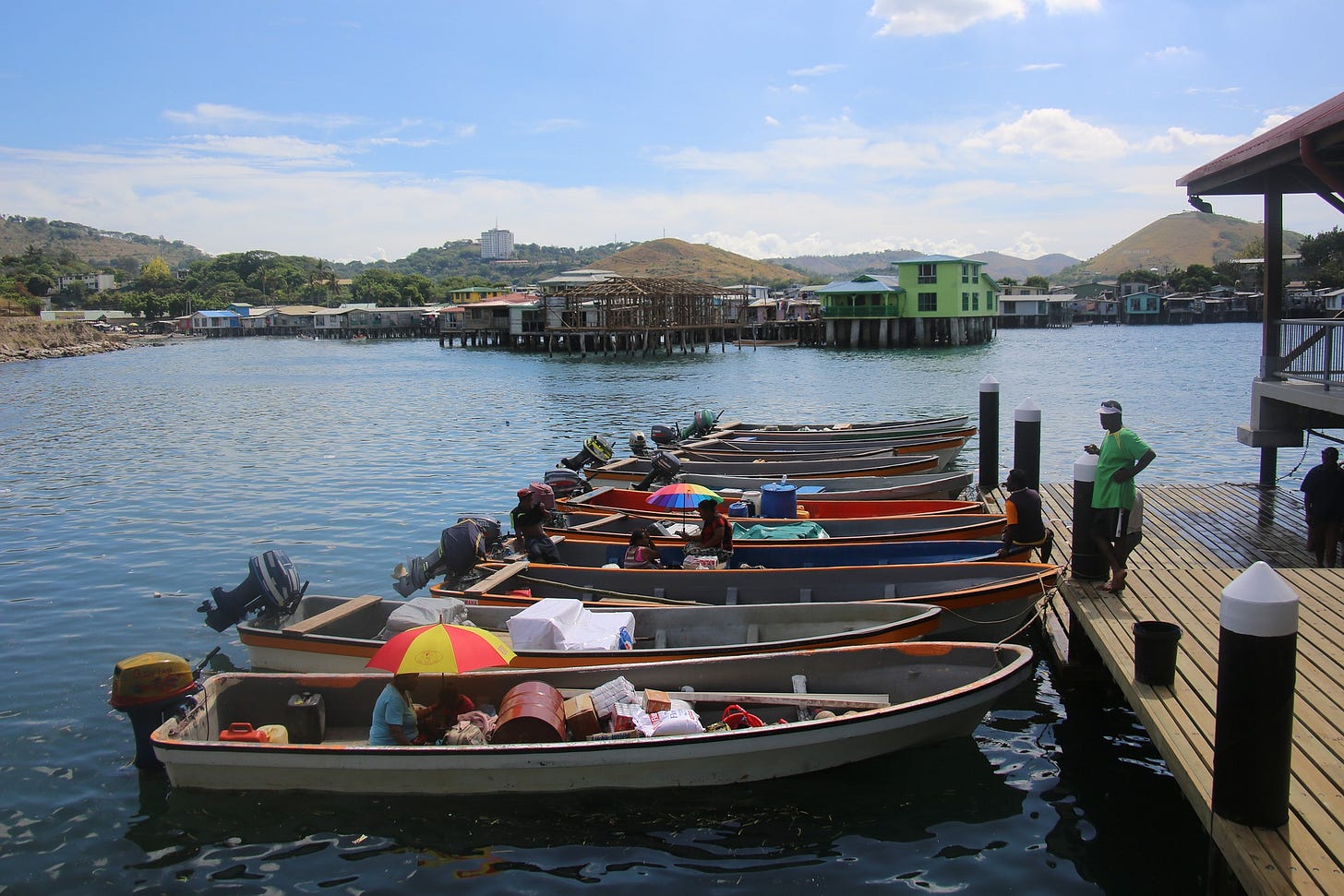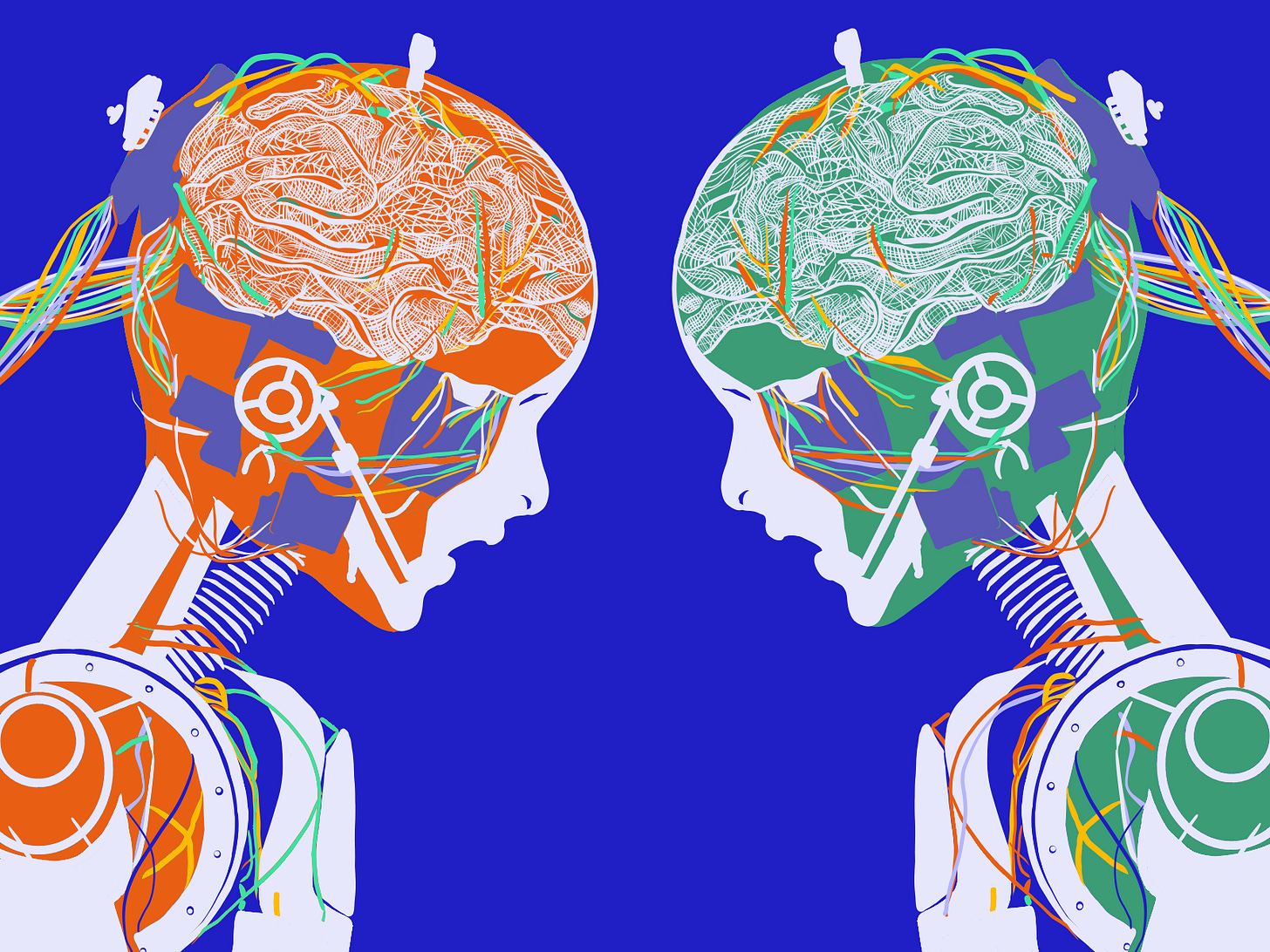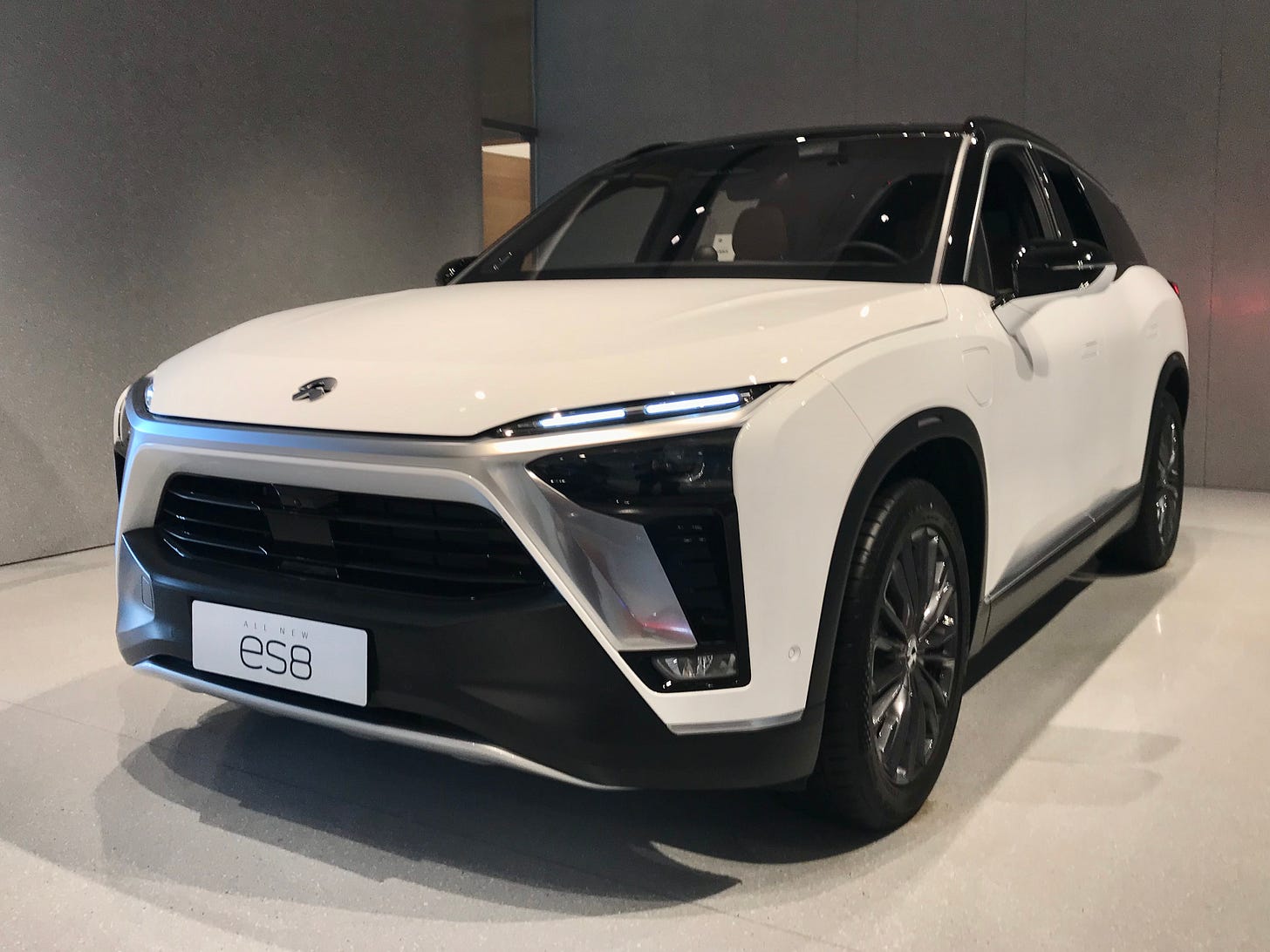Deep-sea mining: it's a no from us
Resistance to this dangerous new practice is mounting in Papua New Guinea. Plus, manufacturing goes virtual in a bid to green up.
🌏 You can expect more positive climate coverage from Ours to Save over 2022, with a deeper focus on video and visuals. As always, the best way to support us is by becoming a paid subscriber. This will ensure we can keep publishing forward-thinking environmental journalism. 🌏
Scraping the bottom of the barrel: deep-sea mining is risky business
Exploratory deep-sea mining in Papua New Guinea has put ecosystems, rare species, and livelihoods at risk. We hear from those calling time on its false promises.
As terrestrial mines are depleted, prospectors are scouring the seafloor for new sources of precious metals. Many have their sights set on polymetallic nodules – potato-sized lumps of minerals that develop on the seabed – which provide a number of rare earth metals used in technological components, from smartphones to solar panels.
Deep-sea mining involves extracting minerals from these nodules, as well as from hydrothermal vents on seabeds, and syphoning them from the ocean floor using specially designed robots, drills and hydraulic systems. They are then processed above ground.
Yet, a growing assembly of scientists has predicted severe consequences to harvesting these minerals - from a loss of biodiversity to a reduction in the ocean’s carbon-storing capabilities and, perhaps most significantly, the breakdown of vast, intricate marine ecosystems.
Despite this, in 2018, the UN's International Seabed Authority opened up 1.5 million kilometres of the ocean floor for exploration in the Pacific and Indian oceans. These sites - currently under leasehold to more than 30 contractors - are over 200m below the surface and are home to a host of unique species and unexplored habitats.

Why is deep-sea mining a cause for concern?
So far, this nascent industry has been fraught with issues: the world’s first deep-sea mining expedition, led by Toronto-based firm Nautilus Minerals, proved to be as unprofitable as it was destructive. In its initial stages, the Solwara 1 project bankrupted the company and left the Papa New Guinea government – which held a 30% stake - £89m out of pocket.
Nautilus became the first company to be issued a deep-sea mining licence in 2007, where it sought to mine copper, silver, gold and zinc in the Bismarck Sea, on the east coast of the island. The company developed underwater robots to access hydrothermal thermal vents, but the funding fell through before any minerals were successfully extracted.
During the exploration phase, large vessels scared away the shark population, whilst further concerns were raised over the potential for tectonic disruption, as the island has multiple active volcanos and is vulnerable to tsunamis.
Whilst Nautilus declared bankruptcy after failing to extract any minerals, its licences are still held by Nautilus Minerals Niugini – a subsidiary of Deep-Sea Mining Finance.
Other contenders in China, Belgium, Germany and France have also emerged since Nautilus’ collapse. Amongst these is The Metals Company (a start-up formerly known as DeepGreen) that plans to extract cobalt and other valuable metals in the Clarion-Clipperton Zone in the Pacific. The Metals Company was founded by a few familiar faces – most notably the former CEO of Nautilus Minerals.
Resistance is mounting
If unopposed, deep-sea mining in international waters is predicted to begin by 2025, but this has been met with local resistance.
The Alliance of Solawara Warriors – made up of residents of the Bismarck and Solomon seas - is calling for a ban on deep-sea mining in nearby waters. Since 2009, it has worked alongside West Coast Development Foundation, mobilising communities, staging protests, organising petitions and taking legal action against Nautilus Minerals.
Growing disillusionment towards deep-sea mining is also reflected in the Deep-Sea Mining Science Statement, which has been signed by hundreds of scientists internationally.
The statement affirms that these untested practices could lead to “the loss of biodiversity and ecosystem functioning that would be irreversible on multi-generational timescales.”
Areas of concern span from the production of sediment plumes - which could disrupt important ecological processes - to noise pollution, which could psychologically impair or drive away larger marine animals. The risk also extends beyond the oceans to local economies due to the potential for contamination of popular human food sources such as tuna.

The petition has called for the authorisation of deep-sea mining to be reassessed until more information has been obtained and the associated risks to the marine environment are fully understood.
Conservation charity Fauna and Flora International has also released a report suggesting that a ten-year moratorium is imposed. The FFI raises the key point that polymetallic nodules are a functioning part of the ecosystems in which they are found.
“Minerals on the seabed are centre-pieces of deep-sea ecosystems,” states Director Pippa Howard, who fears that interfering with the organs of these underwater ecosystems could have potentially lethal consequences.
These include the destruction of the microbes that exist in sediment and hydrothermal vents and that play a crucial role in reducing greenhouse gases. Overall, deep-sea mining risks disrupting the chemistry of the ocean’s ‘biological pump’ – responsible for dispersing nutrients and energy and drawing carbon from the atmosphere.
The bottom line
We are interconnected with our oceans through a network of intricate chemical processes. Deep-sea mining could well disrupt this and, until its effects are fully understood, it must be stalled at all costs.
Without strict, science-based regulations, exploitation of the ocean’s resources could become a hotbed of mismanagement and corruption. Developing countries like Papua New Guinea are already paying the price – as evidenced by new president James Marape’s u-turn on the practice.
As the seabed falls within the global commons, it is considered a shared resource, open to all. Consequently, we need to see changes within the structure of the UN Seabed Authority - an unelected group currently wielding godlike powers over the welfare of our oceans.
Resistance to deep-sea mining is mounting, both from governments and NGOs, amidst growing fears that the exploitation of these minerals could have far-reaching consequences - consequences that spread beyond the seabed to endanger the ecological balance of the entire planet.
Al Howard is a staff writer at Ours to Save, interested in space, art and saving the planet. You can follow her on Instagram.
Featured image courtesy of Jakub Dziubak.
Manufacturing in the metaverse
Virtual twins allow for hybrid digital and physical manufacturing. Can they help green one of the world’s most polluting industries?
Manufacturing is a top polluter. In the US, it accounts for around a quarter of direct carbon emissions. While powering our factories with renewable energy must be a priority, there are ways we can make what happens within them more efficient.
“It’s clear that digital technologies can be harnessed to provide greater support to sustainability initiatives”, says Severine Trouillet, Public Sector Director at Dassault Systèmes. Luckily, investment in energy-saving climate tech is increasing.
One example of this is ‘virtual twins’. A virtual twin is a digital version of whatever product is being manufactured, plus whatever is involved in the manufacturing process. It allows design and testing to be carried out digitally, saving time and eliminating the vast amount of waste that can come from construction errors. Virtual twins were notably used by Moderna during its production of the COVID-19 vaccine – enabling one of the fastest rollouts in history.
Research suggests that, by 2030, the use of virtual twins could save 7.5 gigatonnes of CO2 emissions. Leading on from this, virtual twins allow for unparalleled speed and flexibility in testing. This will be key in making it as risk-free as possible to develop even more radical green technologies.
Below are a few examples from Trouillet on how virtual twins work in practice.
Virtual twins in action
Low-carbon social housing in Grenoble
Amidst sustainable city commitments, construction company Bouygues set out to create a first ever low carbon, autonomous social housing in Grenoble.
The project used virtual twin technology to engineer airflow, energy use, and recycling methods to deliver the first-ever low-carbon, autonomous social housing in the city, and assemble all the parts at the worksite to reduce carbon emissions.
This project decreases water consumption by 70% and recovers heat from recyclable wastewater. Household waste will also fall by 40% using compost and biogas energy.
Next-generation smart electric vehicles
Born from a growing concern about the high pollution levels in cities in 2014, Chinese automobile brand NIO has aimed to position itself at the head of electric vehicle innovation by launching its ES8 model in three years instead of five, the industry norm for new car models.
It succeeded in doing so by using virtual twins for its testing and prototyping process. It used virtual twins to create vehicle digital mock-ups with complete vehicle data available at any hour, saving huge amounts of time.
Projects like this one can result in 227 Megatons of CO2 emissions avoidance in autonomous vehicle development via simulation, and 2 Megaton CO2 emissions reduction in product development from physical prototypes and test vehicles.
Circular packaging
Swiss packaging manufacturer Amcor has set a goal to be a circular ecosystem by 2025. It plans to develop all of its packaging to be recyclable or reusable and to significantly increase its use of recycled materials.
Prototyping packaging designs within a virtual environment has allowed the company to reduce the weight of its bottles from 35% to 50% while reducing its demand for PET resin by more than 100 million pounds annually, equivalent to over 3,500 trash trucks.








